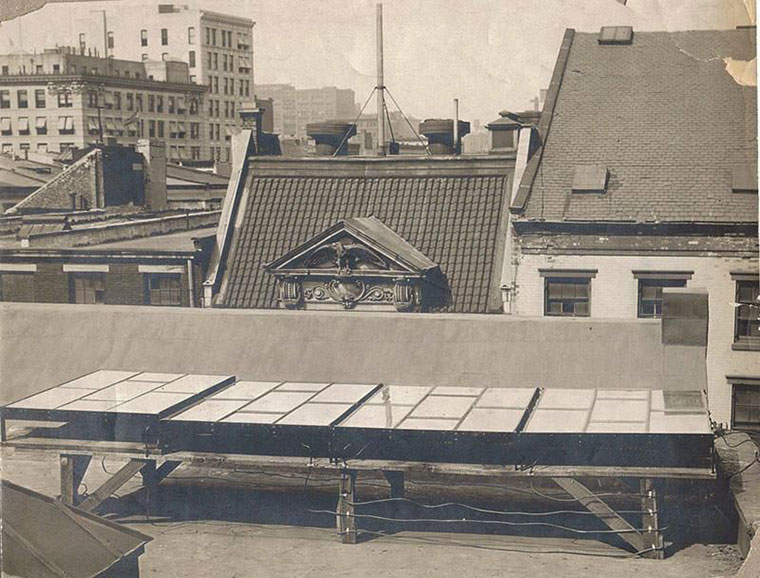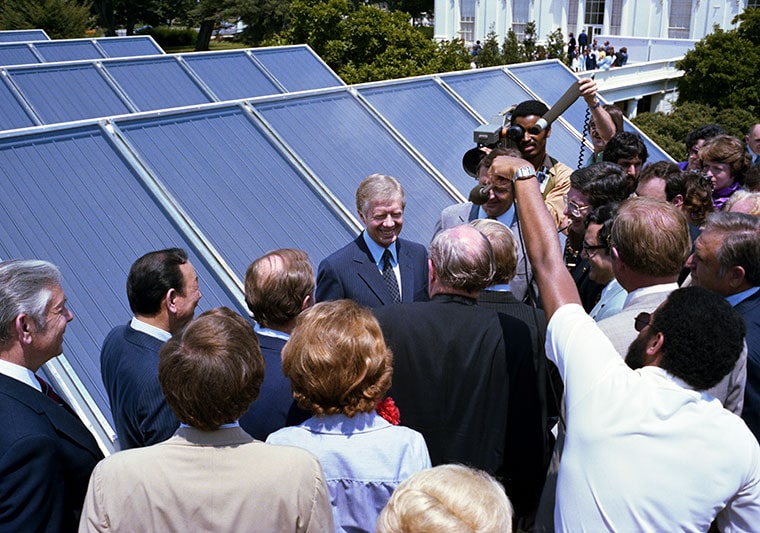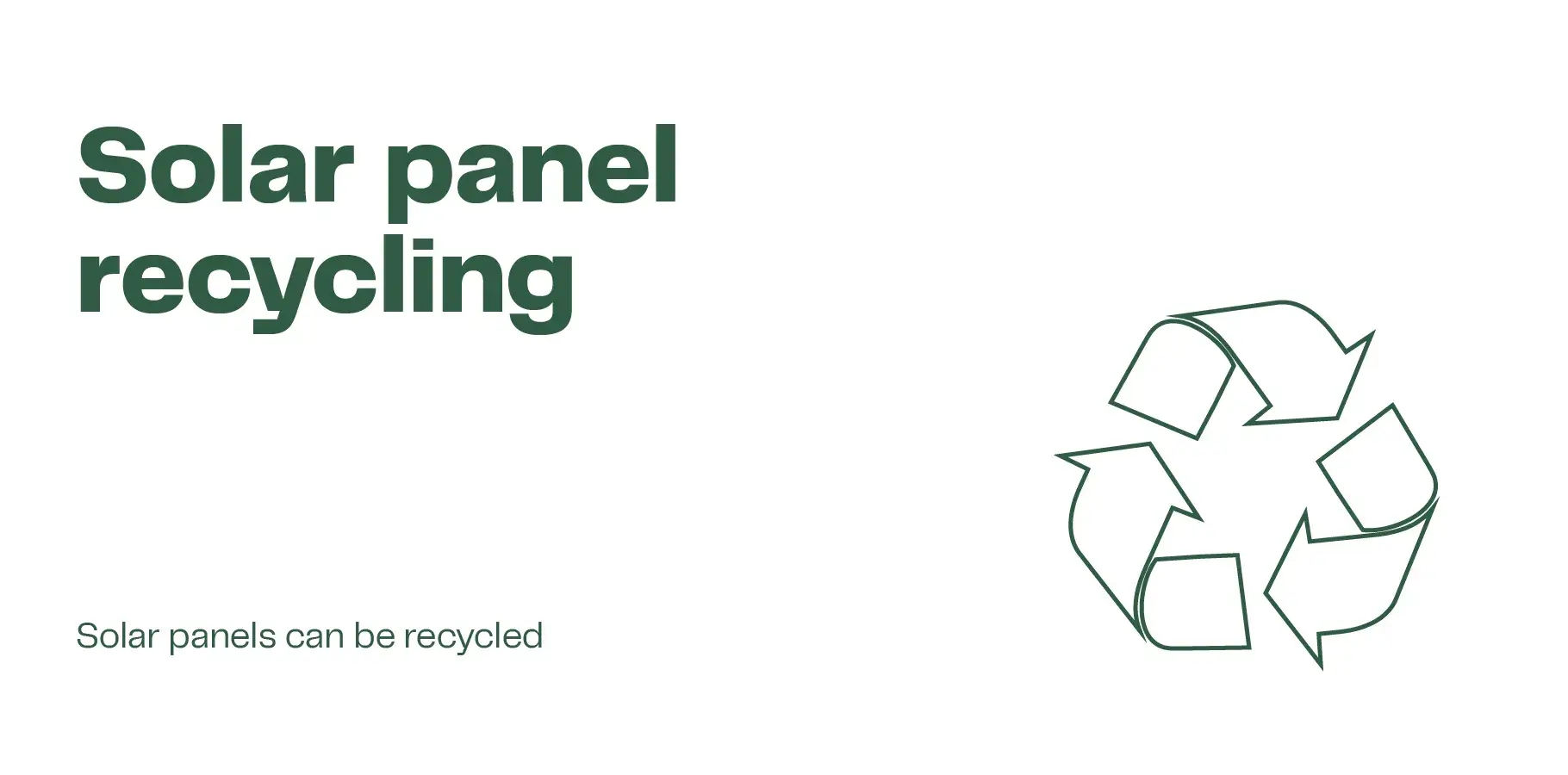- Blog
- Solar panels
- History and invention of solar panels
Who invented solar panels? Solar energy history
- Solar panels
- 3 min read

The concept of harnessing the power of the sun’s rays dates back to the 7th century BC years when magnifying glasses were used to make fire and reportedly burn ants! However, it wasn’t until 1839 when the photovoltaic effect was first discovered by a young French scientist, Edmond Becquerel. The photovoltaic effect is the underlying process by which solar panels work, and hence, Becquerel is credited with being the inventor of solar panels.
The Becquerel effect
At the tender age of 19, Becquerel coated electrodes with silver chloride (AgCl) and silver bromide (AgBr) in an acidic solution, which generated voltage and current. Thanks to Becquerel’s experiments, the photovoltaic effect is sometimes referred to as the “Becquerel effect”.
 Edmond Becquerel, who in 1839 invented solar panels.
Edmond Becquerel, who in 1839 invented solar panels.
History of solar energy

We are thankful to Edmond Becquerel who had the audacity to fool around in his father’s laboratory and understand the photovoltaic effect. However, there have been many significant events and milestones that timeline the history of solar energy from Becquerel’s discovery to the present day.
1839 – Edmond Becquerel discovers the photovoltaic effect
Becquerel generates electricity by using sunlight.
1876 – Selenium used to create electric current
English Professor William Grylls Adams and his student Richard Evans Day bear witness to the photovoltaic effect in action after exposing selenium to light and producing an electric current.
However, Adams’ selenium solar cells didn’t generate enough electricity from the sunlight it captured. Nevertheless, it was a big step forward; Adams and Day had managed to generate electricity without moving parts.
1894 – Solar panels first installed on a rooftop
Solar panels were first installed on roofs in 1884. For reference, this was a dozen years before the launch of the modern Olympics, and 17 years before the Federation of Australia.
 A photo of the first rooftop solar panels installed on a New York building in 1894.
A photo of the first rooftop solar panels installed on a New York building in 1894.
It was the ingenious idea of American inventor Charles Fritts to put solar panels on a rooftop, however, there was a problem. In fact, this problem was so consequential that it would prove to be a major obstacle for scientists for over a century. Fritts’ panels, while technologically sound for the time, were terribly inefficient. They were not an economically viable source of energy generation.
How inefficient, exactly? According to the American Physical Society (APS), Fritts’ panels had an electrical efficiency of less than 1%, which was mostly the result of the properties inherent to selenium. However, it took until 2006, 100 years after Fritts’ death, before silicon cells were able to be manufactured at near 40% efficiency—and even then, the industrial average was a paltry 17%. In 2019, the world record for solar cell efficiency had climbed to 39.2%, which was achieved by using multi-junction concentrator solar cells, developed at National Renewable Energy Laboratory in Colorado, USA.
1979 – US President Jimmy Carter installs solar panels on top of the White House
The invention of solar cells came 100 years before US President Jimmy Carter installed 32 solar panels on top of the White House in 1979. However, Carter’s renewable intervention didn’t last long, President Reagan dismantled the installation and removed the panels in 1986.
 Jimmy Carter proudly showing reporters solar panels at the White House in 1979.
Jimmy Carter proudly showing reporters solar panels at the White House in 1979.
1985 – Solar cells with 20% efficiency developed in Australia
A team from The University of New South Wales’ (UNSW) Centre for Photovoltaic Engineering develops silicon solar cells that achieve efficiency greater than 20%.
Fun fact: The high-achieving Becquerel family
Edmond Becquerel wasn’t the only high achiever in his family. Edmond’s father, Antoine, was a scientist in his own right in the field of electric and luminescent phenomena and Edmond’s son, Henri, continued the family’s legacy by becoming a physicist, Nobel laureate, for his work and discovery of spontaneous radioactivity. Suffice to say, the Becquerel family did their bit when it came to advancing science!
The future of solar panels…
All of the trailblazers listed in this article, from Becquerel to the UNSW have advanced the techonology and the future of solar power is not only bright, but essential. In fact, solar is not only great for the planet, it is now the most effective generator of energy per kilowatt-hour.
In Australia
Where to from here? Solar panels have been installed on more than 3.4 million Australian homes, leaving around 68% of Australian homes who are yet to install solar panels. As the need to store renewable energy and electrify our households increases, we fully expect the uptake of solar batteries to increase.





